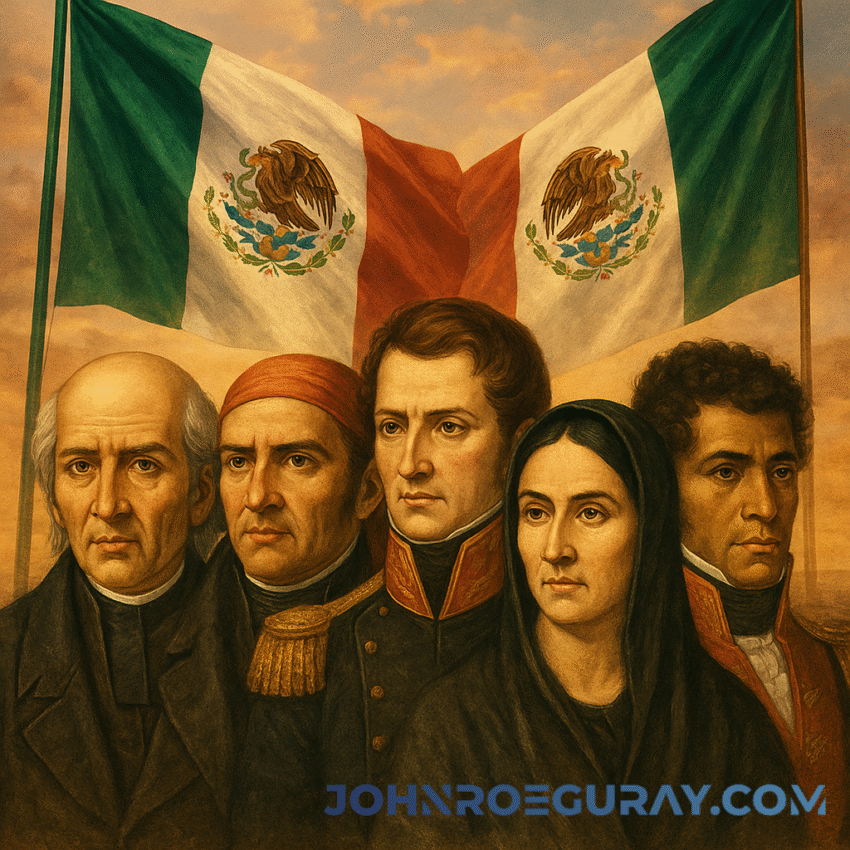Every September, Mexico renews a living tradition that is both reflective and forward-looking. Independence Day — commemorated on September 16 — marks the moment Mexico chose self-determination over colonial rule. In 2025, that choice still resonates across the country’s politics, culture, and economy, and in the Mexican diaspora worldwide.
How It Began: From El Grito to a New Nation
The story typically begins just before dawn on September 16, 1810, when Miguel Hidalgo y Costilla, a parish priest in Dolores (now Dolores Hidalgo, Guanajuato), called townspeople to rise up against Spanish colonial authorities — the famous Grito de Dolores.
What followed was an 11-year struggle that evolved from a popular uprising into a coordinated independence movement led by figures including Ignacio Allende, José María Morelos, Josefa Ortiz de Domínguez, Vicente Guerrero, and later Agustín de Iturbide. Independence was consummated in 1821 with the entry of the Army of the Three Guarantees into Mexico City and the signing of the Treaty of Córdoba.
Why It Matters: Freedom From Colonial Rule
Independence ended three centuries of New Spain’s colonial system. It affirmed:
- Sovereignty and citizenship over viceroyalty and caste hierarchy.
- Cultural plurality, blending Indigenous, Spanish, and Afro-Mexican roots into a shared national identity.
- A political tradition of republicanism and reform, later championed by leaders like Benito Juárez, that sought separation of church and state and equality under law.
The Long Arc Since 1821: Struggles and Progress
Mexico’s path has been uneven — like many post-colonial nations — yet marked by significant gains.
Nation-building and reform (19th century):
- Internal conflicts and foreign interventions challenged early institutions.
- The Reform Era strengthened civil rights and secular governance.
Revolution and social change (20th century):
- The Mexican Revolution (1910–1920) reshaped land tenure, labor rights, and education.
- A long period of single-party dominance brought stability and state-led development, alongside constraints on political competition.
Democratization and global integration (late 20th–21st centuries):
- Competitive elections, a more pluralistic Congress, and a vibrant civil society expanded political voice.
- Economic integration with North America (NAFTA/USMCA), strong manufacturing clusters (autos, aerospace, electronics), energy and agriculture, creative industries, and tourism diversified growth — though regional inequality, informality, and public-security challenges persist.
How Mexico Celebrates Every Year
El Grito (night of Sept 15): The President reenacts the Grito from the National Palace balcony in Mexico City, ringing Hidalgo’s bell and shouting “¡Viva México!” Crowds answer in unison in plazas nationwide.
Parades and pageantry (Sept 16): A large military-civic parade down Mexico City’s main boulevard showcases armed forces, emergency services, and civic groups.
Community and family traditions: Town fairs, fireworks, mariachi, traditional dress, and patriotic colors decorate homes and streets. Seasonal dishes—chiles en nogada, pozole, tostadas, elote—anchor family gatherings.
Diaspora celebrations: From Los Angeles to Madrid, Mexican communities host festivals, concerts, and cultural showcases that highlight music, dance, and regional cuisines.
Mexico in 2025: Where Things Stand
Economic momentum with headwinds: Manufacturing remains a pillar; near-shoring trends attract investment to northern and central states. Yet infrastructure bottlenecks, energy reliability, and security costs can strain competitiveness.
Demographics and talent: A relatively young population is an asset if education quality, digital skills, and health access continue to improve.
Innovation and culture: Fintech, creative industries, and engineering talent are rising, while Mexico’s cultural exports—film, cuisine, literature, and design—amplify soft power.
Institutions and rule of law: The next leaps in productivity are closely tied to judicial effectiveness, anti-corruption institutions, municipal capacity, and professionalized policing.
The Next 25 Years: Prospects and Priorities
- Near-shoring to next-shoring: Mexico can consolidate its role as North America’s advanced manufacturing hub by scaling energy reliability, ports/rail/road logistics, and STEM education.
- Energy transition: Expanding renewables, grid modernization, and clean-tech supply chains (EVs, batteries) could become strategic advantages—balanced with affordable power for SMEs.
- Security and local governance: Sustainable gains depend on community-level rule of law, prosecutions that stick, and data-driven crime prevention.
- Digital productivity: AI adoption, SME digitization, and interoperable government services can narrow the productivity gap—provided connectivity and digital rights advance together.
- Inclusive growth: Policies that reduce regional inequality, boost female labor-force participation, and formalize micro-enterprises can broaden the middle class.
- Climate resilience: Water stress and extreme weather require basin-level water management, climate-smart agriculture, and resilient urban planning.
- Human capital: Investing in early-childhood nutrition, secondary completion, vocational pathways, and university-industry partnerships will determine how fully Mexico captures the demographic dividend.
What Independence Means in 2025
Independence Day is not only a remembrance of 1810; it is a yearly checkpoint on Mexico’s continuous project: to make liberty deliver prosperity, dignity, and justice for all. The celebrations are joyful precisely because the work is serious — and ongoing.
“¡Viva México!”—and the Work Ahead
Mexico’s independence lit a fuse that still burns: the desire to decide its own future. The next quarter-century offers real opportunities—industrial leadership in North America, an energy transition with local benefits, a digital economy that lifts small businesses, and institutions that match citizens’ aspirations. Achieving them will require the same courage, unity, and civic spirit that Hidalgo’s call set in motion.


